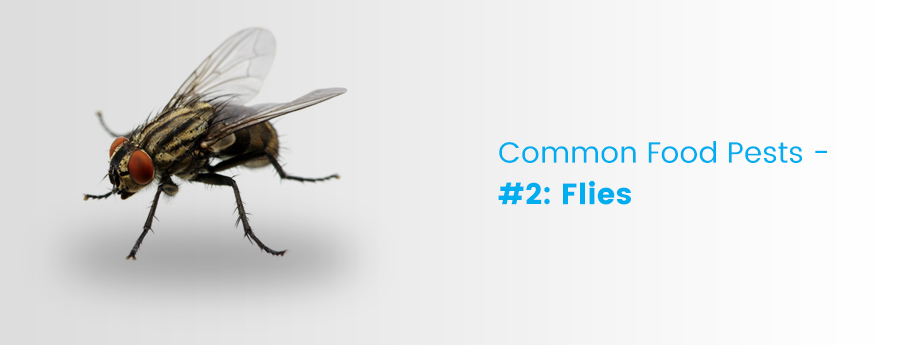The warmer months are well on their way and with the rise in temperatures, we can expect to see an increase in one of the greatest pest control challenges – the fly. For food processing facilities, flies are more than just an in-your-face annoyance, they are a major health risk.
Known for spreading disease and spoilage organisms in food, flies are associated with at least 65 diseases, the most well-known of which include Cholera, Tuberculosis, Salmonellosis, Dysentery, Conjunctivitis and Gastroenteritis.
How flies transmit disease
Garbage, sewage, decaying plant materials and organic manure provide the perfect environment for flies to feed and these locations are also their preferred breeding sites.
Firstly, flies transmit disease through their digestive habits. When a fly ingests decayed or contaminated matter, pathogens accumulate in their digestive system. When flies regurgitate their stomach contents, which is part of their feeding habit, or when they defecate, they then spread these pathogens and bacteria.
Secondly, flies spread disease through the hairs on their bodies. A fly is covered in microscopic hairs on their legs and bodies which accumulate pathogens from the decaying matter on which they prefer to feed. When a fly sits on food, cooking surfaces or utensils, they then transmit these pathogens to that surface.
When humans consume infected food or drink, or use contaminated cutlery and utensils, they are at risk of catching a fly transmitted disease.
Pest control to prevent flies in your food processing facility
Flies are attracted to two things – heat and odour. While heat means optimal breeding and living conditions, odours mean food.
Waste Control
Ensuring waste is contained in a specially demarcated area and ensuring this area is kept as clean as possible, will help to reduce the number of flies attracted to breed close to your facility. Dustbins should be kept closed, waste should be removed often and walls and flooring should be disinfected regularly to remove any decaying matter.
UV Light Traps
As a key means to eliminate flies, UV light traps, which effectively shock and kill the creatures, should be installed both outside at any open entrances to a facility, as well as inside entrances for an additional layer of protection. These traps should be well maintained and cleaned on a regular basis.
Door and Window Screens
Covering doors and windows with suitable mesh screens prevents flies from entering the facility. Screens should be checked regularly for damage and well maintained. Staff should be trained to keep these shut at all times.
Hygiene Practice
Maintaining a high standard of hygiene in all food preparation, storage and disposal areas will make these areas less attractive to flies. Utensils should be cleaned as quickly as possible and stored in an area with sufficient air circulation. Areas that are likely to accumulate food particles should be eliminated or kept spotlessly clean.
Do you have a pest control program in place?
When it comes to flies, we are able to eliminate infestations and manage the prevalence of numerous fly species, including the House Fly, Flesh Fly, Vinegar Fly, Blow Bottle Flies, Stable Flies, Drain Flies and Fruit Flies.
If you suspect that flies are, or are likely to become a pest control issue, speak to Ecowize today. We have the knowledge and experience to assist you to get your pest control program in place and reduce the contamination risk at your food processing facility. This will ensure that your facility meets industry hygiene and sanitation standards, and contributes to your facility being audit ready at all times.
Call us on 087 803 022 or send us a message today.
Comments are closed.





